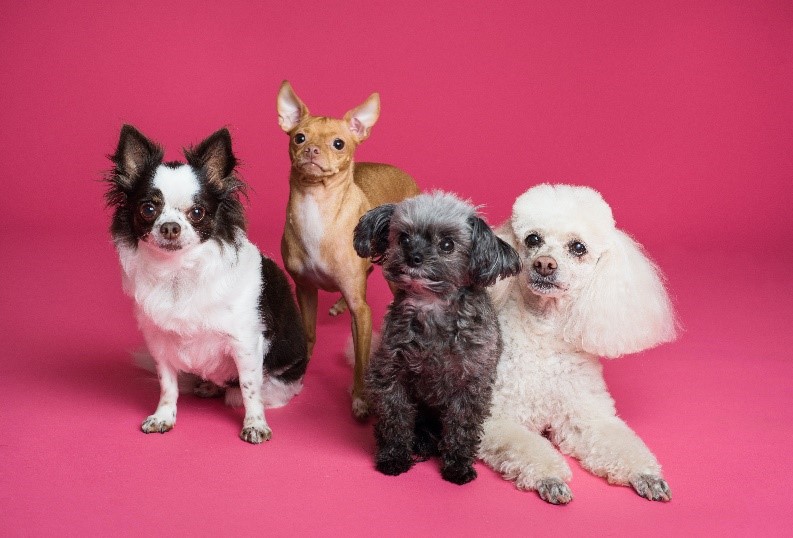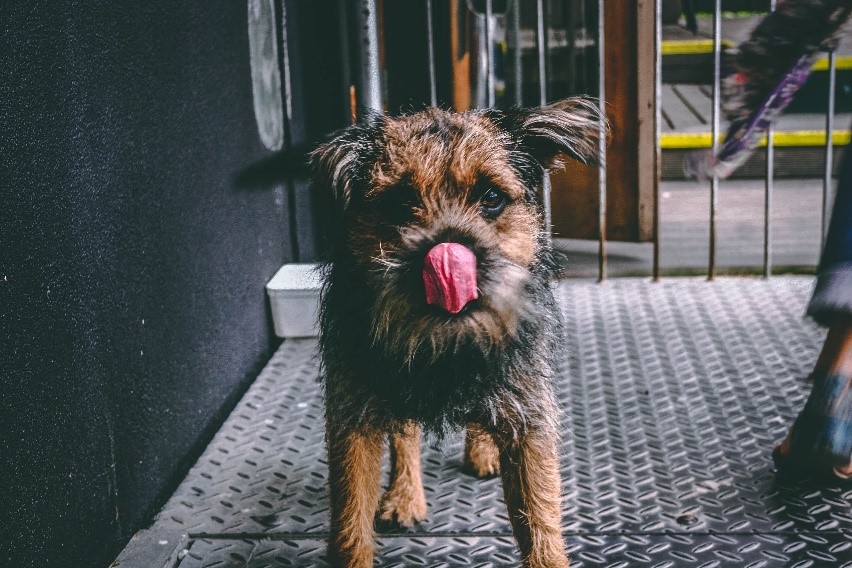Why Do Dogs Lick Your Legs? (ANSWERED!)
Dogs are naturally loyal and compassionate, and there are various ways they show their loyalty and affection for their human companions. When dogs lick your leg, it’s often a sign that they want your attention while showing kindness and love. If your dog’s licking becomes more frequent, to the point of constant or excessive licking, other factors may contribute to this licking behavior.
When dogs lick people, it’s typically seen as different than when a mother dog licks or cleans their young. Generally, dogs licking legs is not a cause for concern, as it’s harmless, and often how dogs show affection to their human companion. While seeking attention is the primary reason many dog owners notice in their pets, obsessive licking behavior may have other underlying causes worth investigating.
1. Excessive Licking Can Be a Sign of Anxiousness
While leg licking isn’t a cause for concern, it can be a sign of anxiety or stress if it becomes obsessive. If your dog appears insecure or stressed, it’s essential to determine why and provide the needed support for your pet.
It’s not unusual for a dog, or any pet, to exhibit anxious behavior, including constant licking, when they move to a new home, or there’s a significant change in the household, such as a new family member or pet is introduced. In most cases, this licking behavior will subside quickly, but if it continues or worsens, it’s best to consult a veterinarian for advice and treatment.
An older dog may feel uncomfortable in certain situations, especially if it is a sudden change or unfamiliar situation, which causes them to draw closer to their owner or cope through leg licking. This behavior, if it continues, can lead to excessive grooming or licking of other objects, such as chewing toys, blankets, or furniture. It’s a dog’s way of communicating about their discomfort, which is crucial to notice and monitor if further support is required with the assistance of a veterinarian.
2. Leg Licking Is Your Dog’s Way of Grooming Their Human
Dog saliva is how your pet bathes themselves and often grooms each other. It is common for dogs in packs or groups of dogs that live together. It’s a form of social interaction and a way to express love, which is why dogs lick their owner’s legs and feet. They see their human companions as a part of their family or pack and their way of letting you know that you’re one of them.
If you wear shorts or have uncovered legs during the warmer season, your dog may be more likely to lick your legs as a way to show their love. There’s no cause for concern when it becomes constant, though a gentle encouragement to stop or carefully move your dog from your legs is a way to train them to curb this behavior.
3. Dogs Sense Certain Smells on Your Skin
Dogs have an incredible sense of smell and taste, over forty times more acute than humans. They can detect when your skin is secreting pheromones or producing unique scents, such as saltiness through sweating, which attracts dogs to lick your skin. This process is entirely normal, as many dogs find this salty smell pleasant and may lick your skin at the slightest detection, even if there doesn’t appear to be any sweat or skin changes.
Foot licking is typical if there’s a substance on your feet that your dog is attracted to, especially after walking outdoors or wading through water. In most cases, the salty taste draws dogs to leg licking, and it’s not harmful to their health or humans.
4. Dogs Lick for Attention
It can be ticklish when dogs lick legs, causing laughter or a quick but positive reaction. This attention is what dogs love, and leg licking is one of the easiest ways to get a response from a pet owner. If you have puppies or a young dog, leg licking is how many dogs show they’re excited and ready to play. It’s also a common way to get attention, whether to go for a walk, request a snack, or communicate with them.
If your dog’s licking is unwanted or off-putting, it’s essential to gently train them to stop instead of showing an adverse or angry reaction. The best method is a firm but kind “no,” followed by carefully moving away from them or showing them how to stop.
Shouting or reacting fast can frighten a pet, which can cause them to hide or become scared every time you want to show affection. Always communicate with a kind, affectionate, but firm tone to address unwanted behavior so that your dog feels comfortable and safe.
5. Itchy Skin and Allergic Reactions
If your dog has a food allergy, an injury, or itchy skin, it’s common to lick their paw or the affected area to provide comfort. In some cases, this may only happen momentarily until their skin or fur heals. However, if the injury or allergic reaction is moderate to severe, it’s best to consult with a veterinarian for treatment options.
Itchy skin or allergies can be caused by food, contact with a harmful substance, or the surrounding environment. In these situations, it’s essential to get familiar with your dog’s allergies and health conditions that may cause skin and fur issues. Natural, topical treatment or a change in diet is often helpful in reducing skin problems and reducing the licking habit.
6. It’s How Dogs Show Submission and Respect to Their Owners
Dogs are loyal and want to show that they respect and support their owners. They display their submission in various ways, including following commands, showing extra attention, and licking your legs. It’s a dog’s way of expressing their devotion and commitment to their human companions, which they consider family.
Final Thoughts
A dog’s licking is a common and harmless way to express affection, gain their owners’ attention, and provide comfort. Unless there’s a specific concern about a dog’s health or excessive licking due to anxiety or stress, licking is normal behavior for dogs. It provides an essential means of communicating, grooming, and playing with other dogs and humans. It’s also an essential way to improve mental stimulation in your dog while providing a way for them to bond with humans.

